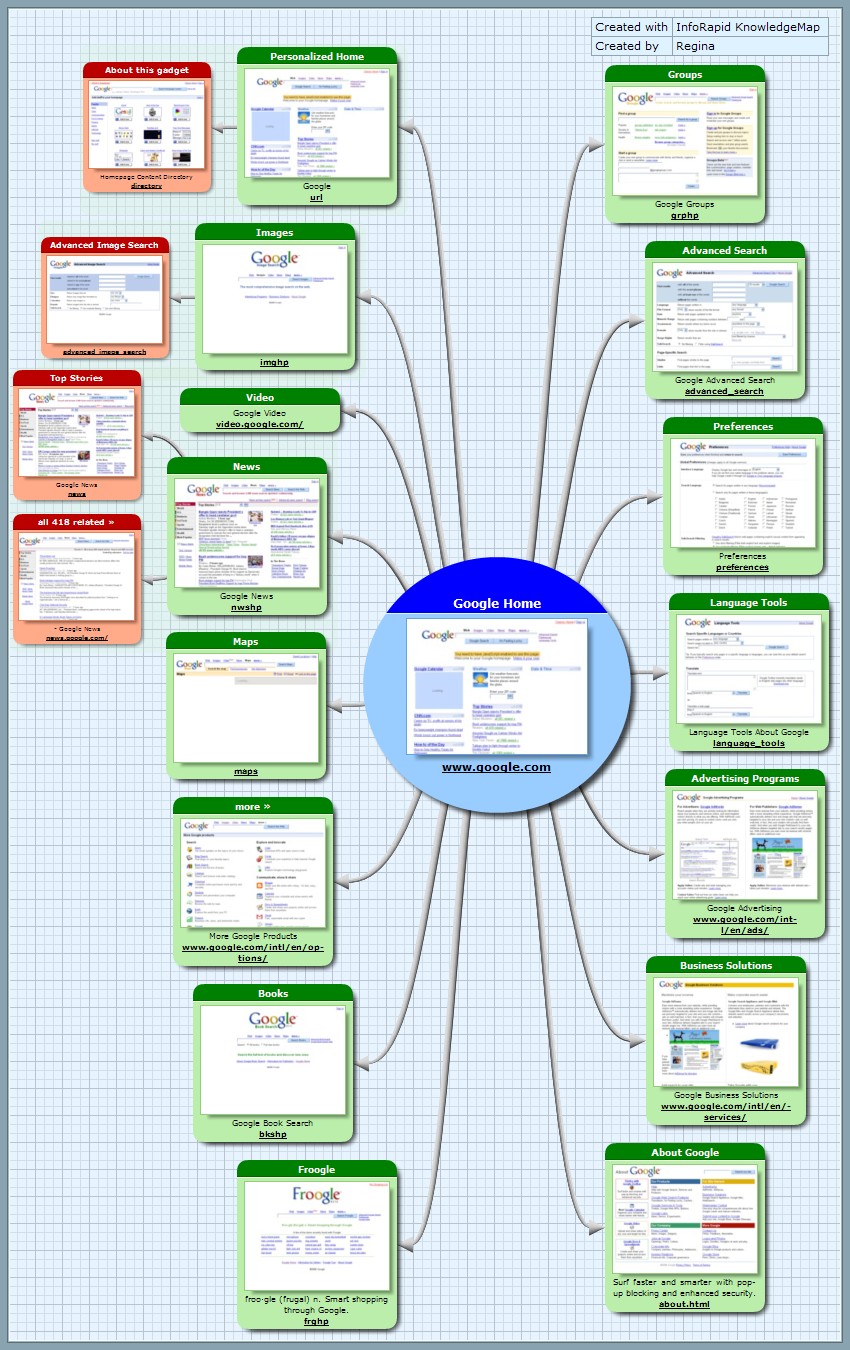A navigation map is a planning tool in interaction design to visualize the structure of an application. This technique can be applied for any kind of applications but navigation maps are most widely used in web development and are called site maps.
 |
| Site map of Google |
Apart from being a great way to visualize the content and interactions between different screens, the reason site maps are popular in web development is that it's an easy way for webmasters to inform search engines about pages on their sites that are available for crawling.
What's crawling?
What's crawling?
Web crawling is a method for collecting data on the current state of the web. A vast number of web pages are continually being added every day and information is constantly changing. A web crawler is a way for the search engines like Google or Yahoo to regularly ensure that their databases are up-to-date for the purpose of web indexing.
"Web crawlers usually discover pages from links within the site and from other sites. Sitemaps supplement this data to allow crawlers that support Sitemaps to pick up all URLs in the Sitemap and learn about those URLs using the associated metadata. Using the Sitemap protocol does not guarantee that web pages are included in search engines, but provides hints for web crawlers to do a better job of crawling your site." - sitemaps.org
Why is it essential?
One important goal of most companies is to promote and bring more visitors to their website. And to do so, they need to increase their visibility in search results. This process is called Search Engine Optimization and is a primary concern for Internet marketing.
To conclude, from a tool to detail interaction design, navigation map became a way of increasing websites visibility. Thus, the practice of this technique is more than welcome in web development for its wide range of interesting properties.

